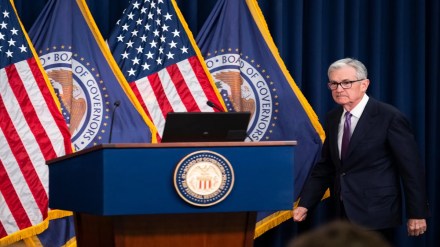Today, July 10, the testimony of Chair Jerome H. Powell is before the U.S. House Financial Services Committee. Yesterday, on Tuesday, July 9, Powell testified before the U.S. Senate Committee on Banking, Housing, and Urban Affairs of Congress and presented the Semiannual Monetary Policy Report.
The next FOMC meeting takes place on July 30-July 31 while the US CPI data for June arrives on July 11. FOMC has maintained the target range for the federal funds rate at 5-1/4 to 5-1/2 percent since last July. The first-rate cut by FOMC is expected to be in September.
On Tuesday, the S&P 500 and Nasdaq Composite closed higher by 0.07% and 0.14%, respectively, setting fresh record highs. Meanwhile, the Dow lost 0.13% for the second consecutive day. Stock prices are hitting record levels due to expectations that the US Federal Reserve will likely start cutting interest rates soon, reducing the expense of borrowing for businesses.
The economy is showing signs of recovery, and the earnings of companies for the April-June period are expected to meet or exceed forecasts. The S&P 500 index gained a whopping 14.5% to close the first six months of 2024. The Dow Jones Industrial Average rose 3.8% and the Nasdaq Composite climbed 18.1%.
Powell in his testament to U.S. Senate Committee on Banking, Housing, and Urban Affairs on Tuesday stated – We continue to make decisions meeting by meeting. We know that reducing policy restraint too soon or too much could stall or even reverse the progress we have seen on inflation. The most recent inflation readings, however, have shown some modest further progress, and more good data would strengthen our confidence that inflation is moving sustainably toward 2 percent.
At the same time, in light of the progress made both in lowering inflation and in cooling the labor market over the past two years, elevated inflation is not the only risk we face. Reducing policy restraint too late or too little could unduly weaken economic activity and employment.
In considering adjustments to the target range for the federal funds rate, the Committee will continue its practice of carefully assessing incoming data and their implications for the evolving outlook, the balance of risks, and the appropriate path of monetary policy.
On US CPI Data
Inflation has eased notably over the past couple of years but remains above the Committee’s longer-run goal of 2 percent. Total personal consumption expenditures (PCE) prices rose 2.6 percent over the 12 months ending in May. Core PCE prices, which exclude the volatile food and energy categories, also increased 2.6 percent.
On US Economy
Over the past two years, the economy has made considerable progress toward the Federal Reserve’s 2 percent inflation goal, and labor market conditions have cooled while remaining strong.
Recent indicators suggest that the U.S. economy continues to expand at a solid pace. Gross domestic product growth appears to have moderated in the first half of this year following impressive strength in the second half of last year. Private domestic demand remains robust, however, with slower but still-solid increases in consumer spending.
On US Unemployment Rate
The unemployment rate has moved higher but was still at a low level of 4.1 percent in June. Payroll job gains averaged 222,000 jobs per month in the first half of the year. Strong job creation over the past couple of years has been accompanied by an increase in the supply of workers, reflecting increases in labor force participation among individuals aged 25 to 54 and a strong pace of immigration. As a result, the jobs-to-workers gap is well down from its peak and now stands just a bit above its 2019 level
